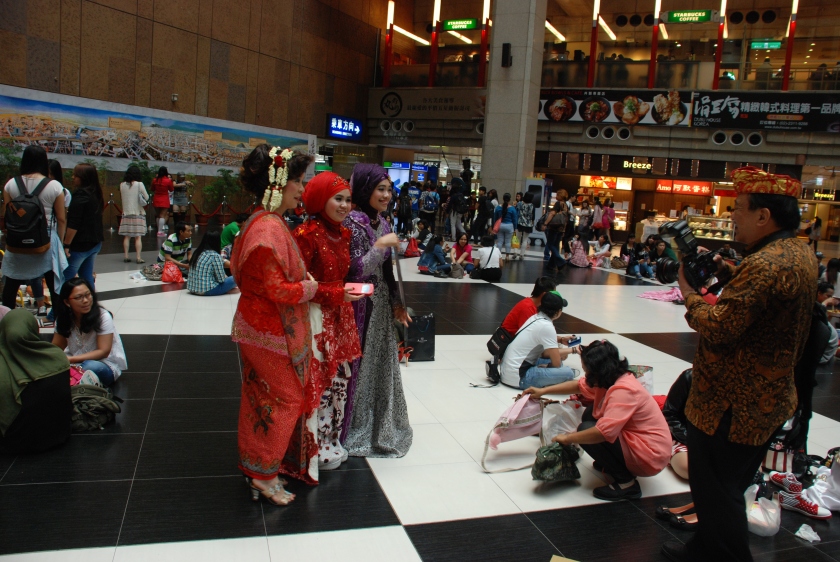Written by Ji-ping Lin.
Much like many countries, Taiwan has a long historical tradition of migration, including internal and international. Taiwan’s early developments were mainly fueled by immigration. From the 17th century to the 1940s, immigration and the development of Taiwan were largely shaped both directly and indirectly by the Dutch and the Empires of China and Japan. In the Great Marine Times, Taiwan started to become a destination for trade and immigrant labor. The importance of Dutch colonization in southern Taiwan was twofold: It heralded the creation of an immigration “port of entry” in the southern Taiwan. In response to the demand for laborers first initiated by Dutch colonization, a massive wave of Chinese immigrants came to Taiwan between 1661 and 1682. During the rule of the Qing Dynasty between 1683 and 1894, immigrants triggered the formation of new settlement bases in central and northern Taiwan, despite a strict Chinese ban on emigration at that time.
Under Japanese rule in 1895-1945, immigration from China came to an end and the development relied more on industrialization that started triggering the onset of urbanization and internal migration. Through government encouragement, cultivation activities in eastern Taiwan became intensified, leading to eastward internal migration in the 1920s. The Japanese Empire’s “Southward Policy” triggered industrialization, leading to the emergence of Kaohsiung City as an industrial center in the 1930s and the formation of a dual-pole (north-south) regional economic pattern (Taipei-Kaohsiung).
After World War II and until the 1990s, Taiwanese development continued to be largely dependent on internal forces, although external influences, mostly from the United States and partly from China in terms of politics and Japan in terms of economics, remained crucial. The civil war in China in the late 1940s brought about a huge influx of 2 million Chinese Mainlanders into Taiwan. As a result of political and military antagonism between the KMT and CCP, trade and migration between Taiwan and Mainland China was suspended over the next four decades.
Between 1961 and 1973, rapid economic growth generated a massive rural-to-urban migration, especially migration to the northern (Taipei) and southern (Kaohsiung) areas. The oil shocks of 1974 and 1979 and increasing competition from other developing countries forced Taiwan to switch to the development of high-tech industries. The late 1980s marked a key era of migration transition, both internally and internationally, as the impact of economic restructuring, burgeoning globalization, and political liberalization became apparent. In the late 1980s and early 1990s, the most dramatic changes in internal migration was the net transfer of migrants to northern Taiwan’s Taipei Prefecture (now New Taipei City) from other regions. As for international migration, the most noteworthy change was the Taiwanese government deciding to open the country’s borders to low-skilled contract foreign workers in the 1990s from ASEAN (Association of Southeast Asian Nations) countries, and foreign wives began to serve as a new source of population growth. Emigration before 1990 was minor in volume, with students studying abroad primarily in the United States as the main source of emigrants. Due to huge investment in China starting in 1990s, mobility and emigration of high skilled Taiwanese to China was seen to increase.
Immigration impact analysis indicates that the increased immigration of foreign contract workers in the 1990s and early 2000s has led to a net transfer of native-born laborers from main immigrant-receiving areas to labor markets with less immigrants. Because the complementary effect of immigration outweighs its displacement effect, both out- and in-migration for immigration ports of entry are negatively associated with increased immigration. As the baby boomers move to their pre-retirement age after 2010, immigration impact on low-skilled native-born workers is seen to be ignorable.
After 2010, factors contributing to the continuing growth of foreign labor from Southeast Asian countries are complex. One important factor that has long been overlooked is the effect of the decree of the Labor Contract Law in China in 2008. Because this law increases production costs in China substantially, Taiwan’s investment of capital and human resource has partly been redirected to Southeast Asian countries. One outcome of this trend is growing linkages between Taiwan and Southeast Asia in terms of the flow of both capital and human resources.
In terms of immigration policy, the government seeks to change regulations to encourage immigration of talent into Taiwan. In response to the declining population base, it may consider offering permanent residency to low-skilled contract foreign workers who have stayed in Taiwan for a long time (e.g., at least fifteen years). Granting permanent residency would not only promote integration but also intensify various ties with Southeast Asia. In terms of emigration policy, the government seeks to discourage out-migration of youth by removing barriers to social mobility and improving working conditions.
To cope with super-low fertility and population ageing, a new immigration policy has been proposed. As expected, it is controversial in the public. One of the main issues of debate is whether Taiwan should offer permanent residency and citizenship to senior low-skilled foreign contract workers from Southeast Asian countries. In addition to traditional employment issues, the debate encompasses social, cultural, and human rights issues. Given that Taiwan is now more socially and culturally pluralistic, the government has changed many regulations to improve the working conditions for foreign labor —for example, by allowing foreign laborers to enroll in the national health insurance and national pension systems.
Ji-Ping Lin received his Ph.D. in Geography from McMaster University(Canada). His main specialized areas are migration studies, statistical & scientific computing, and data science. Migration study is his long-term research interest. In the past five years, he has also focused on Taiwan Indigenous Peoples (TIPs) studies. Photo Credit: Flickr/Lennon Ying-Dah Wong


One comment